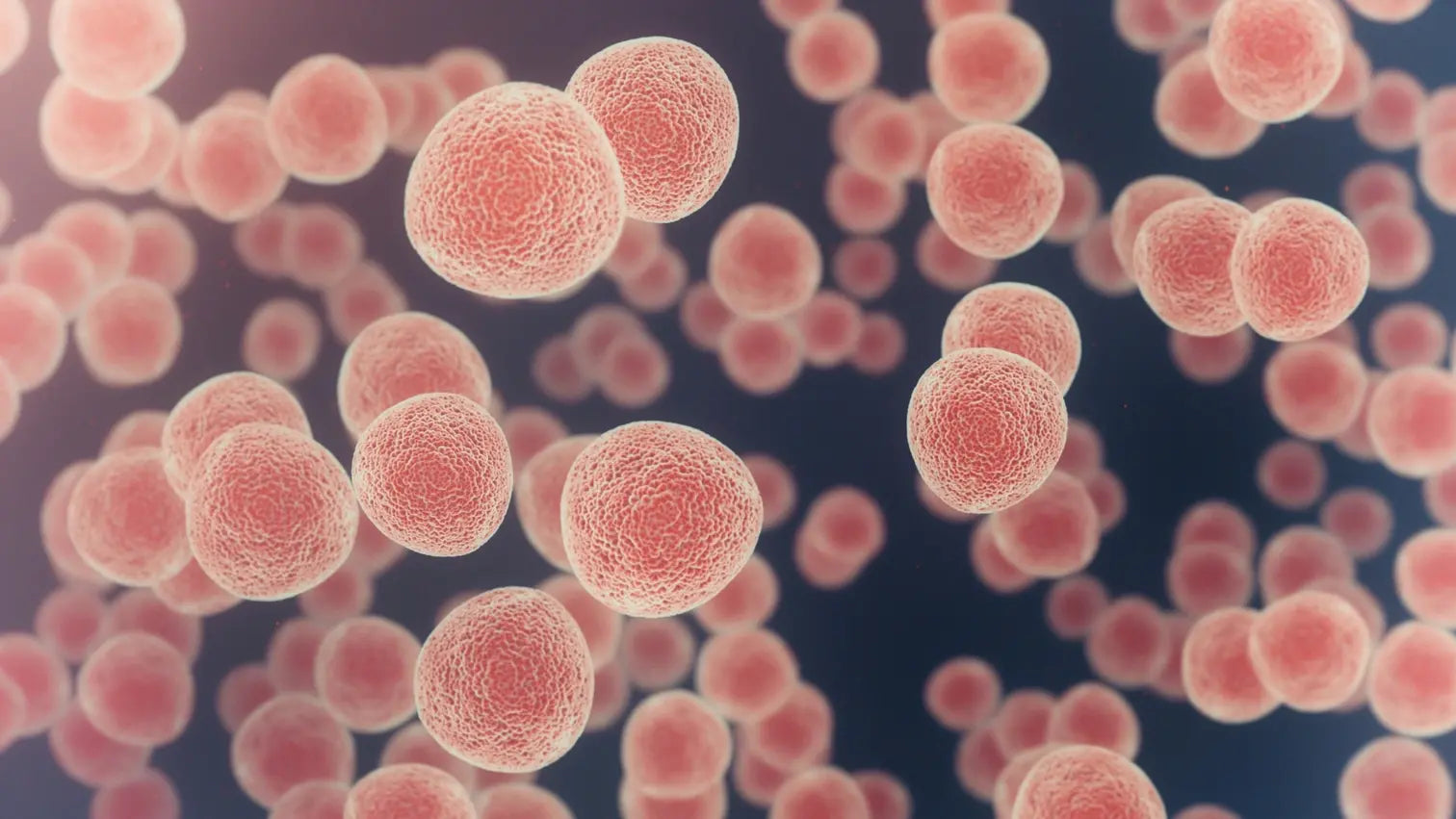What is senescence?
What is the purpose of cellular senescence?
What are the different types of cell senescence?
- Replicative - This occurs when a cell has hit its maximum number of cell divisions and should no longer replicate to prevent the potential for damaged cell proliferation. This is the classic senescing process.
- Oncogene Induced - Oncogenes are genes responsible for cell replication. When these genes are overexpressed, they can trigger higher than normal levels of cell proliferation that can result in a tumor. To prevent this from happening, the cell activates two tumor-suppressing pathways in response to oncogene overexpression: these pathways stimulate cellular senescence, turning off the overactive cell before it becomes cancerous.
- Stress Induced - Our bodies are constantly encountering stressors like oxidizing agents and free radicals. Some of these stressors naturally occur in the body and others exist all around us in the air we breathe and the food we eat. Some of these stressors can cause single stranded breaks (SSBs) in the DNA inside our cells. In response, our cells activate a DNA damage alert to prematurely send the damaged cell into senescence. [4]
Is senescence good or bad?
- Senescent cells have an increased level of reactive oxygen species (ROS)–a free radical that is toxic to the skin and plays a major role in skin aging. [5]
- Senescence can produce inflammatory signals that suppress the immune system, which can drive tissue degeneration and certain age-related diseases, including the production of cancer cells. [6]
- Senescence can induce a harmful state of “senescence-associated secretory phenotype (SASP)”, which turns senescent fibroblasts into proinflammatory cells that can promote tumor progression.
What is the impact of senescence on healthy cells?
What is the relationship between cell senescence and aging?
How is senescence linked to skin aging?
Is it possible to slow down cellular senescence?
OneSkin’s OS-01 peptide reduces cellular senescence in skin

- Cellular senescence is one of the nine hallmarks of aging and occurs when a cell reaches the end of its life cycle and stops dividing.
- The three types of senescence are replicative senescence, oncogene-induced senescence, and stress-induced senescence.
- Though senescence is an evolutionarily protective measure against the proliferation of unhealthy cells, senescent cells can cause widespread damage if left to linger in tissues.
- Senescence is linked to several age-related diseases and can cause systemic inflammation, along with visible signs of aging.
- Senotherapeutic compounds, which target senescent cells, are making their way to the forefront of longevity research as a way to extend healthspan.
- OneSkin’s proprietary OS-01 peptide has been scientifically proven to reduce the number of senescent cells in in vitro skin cultures by up to 50%, powering its ability to reduce skin’s biological age. [12]
- https://www.nature.com/articles/35036093
- https://www.ncbi.nlm.nih.gov/pmc/articles/PMC8344376/
- https://www.frontiersin.org/articles/10.3389/fcell.2020.00364/full
- https://www.ncbi.nlm.nih.gov/pmc/articles/PMC4214092/
- https://www.ncbi.nlm.nih.gov/pmc/articles/PMC4496685/
- https://www.ncbi.nlm.nih.gov/pmc/articles/PMC4496685/
- https://www.nature.com/articles/s41586-021-03547-7
- https://pubmed.ncbi.nlm.nih.gov/7568133/
- https://www.nature.com/articles/s41574-018-0059-4
- https://pubmed.ncbi.nlm.nih.gov/30616998/
- https://pubmed.ncbi.nlm.nih.gov/34699859/
- https://www.nature.com/articles/s41514-023-00109-1



